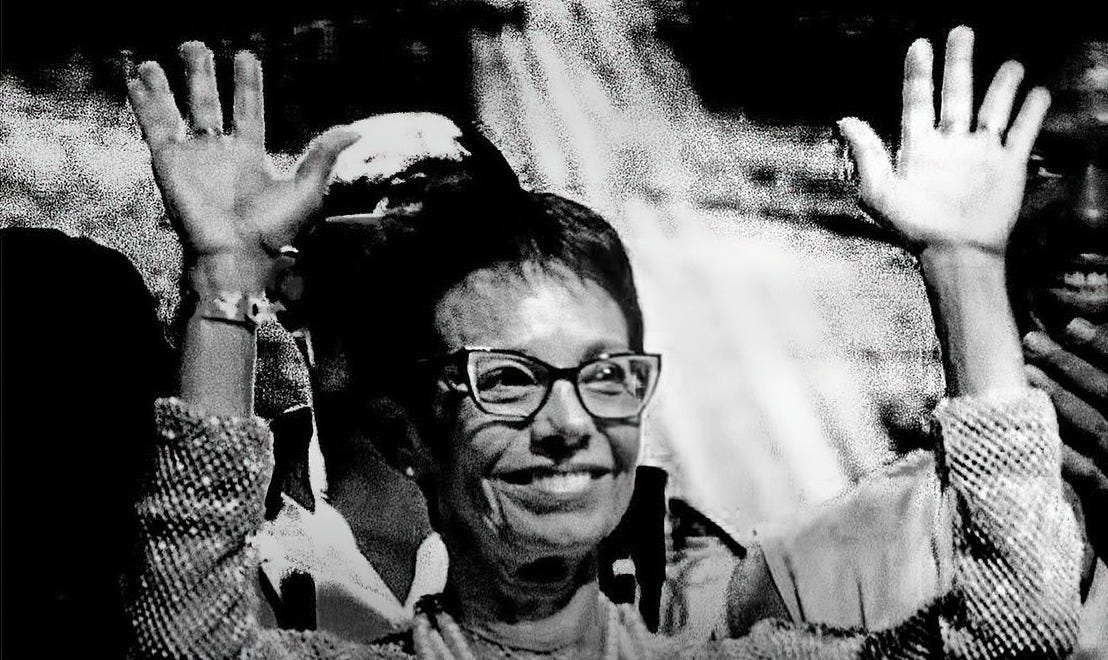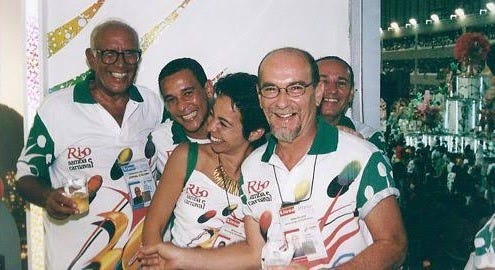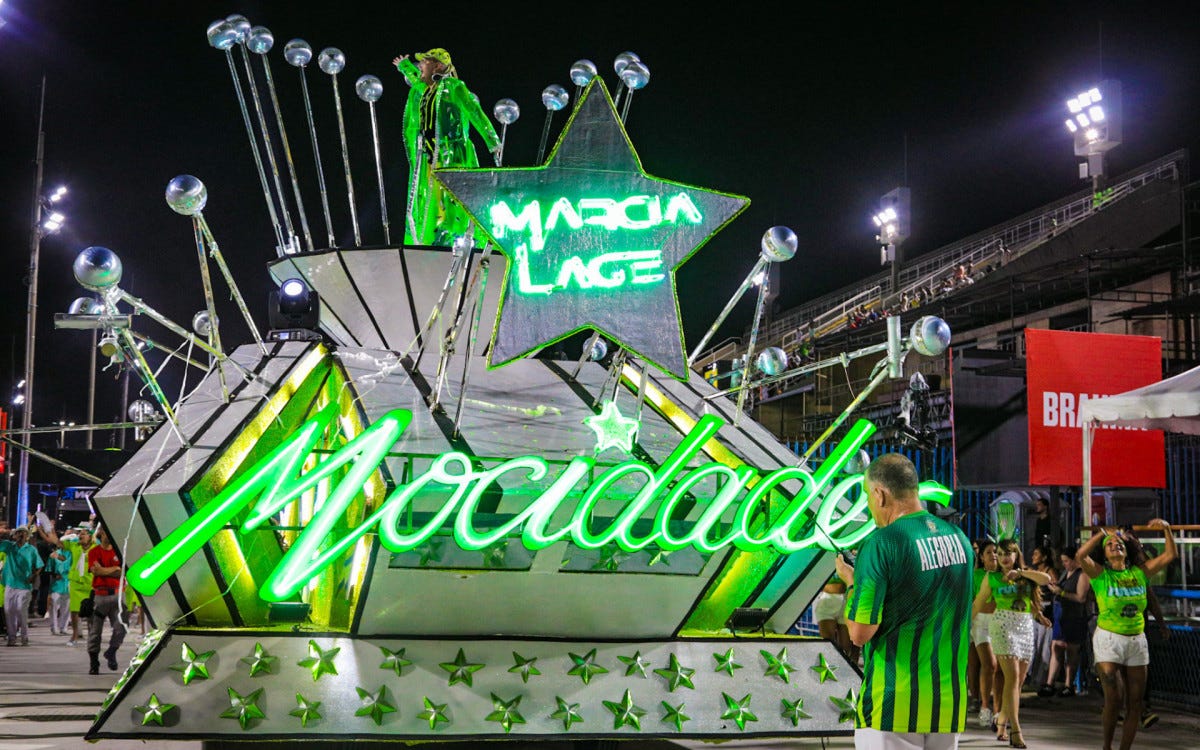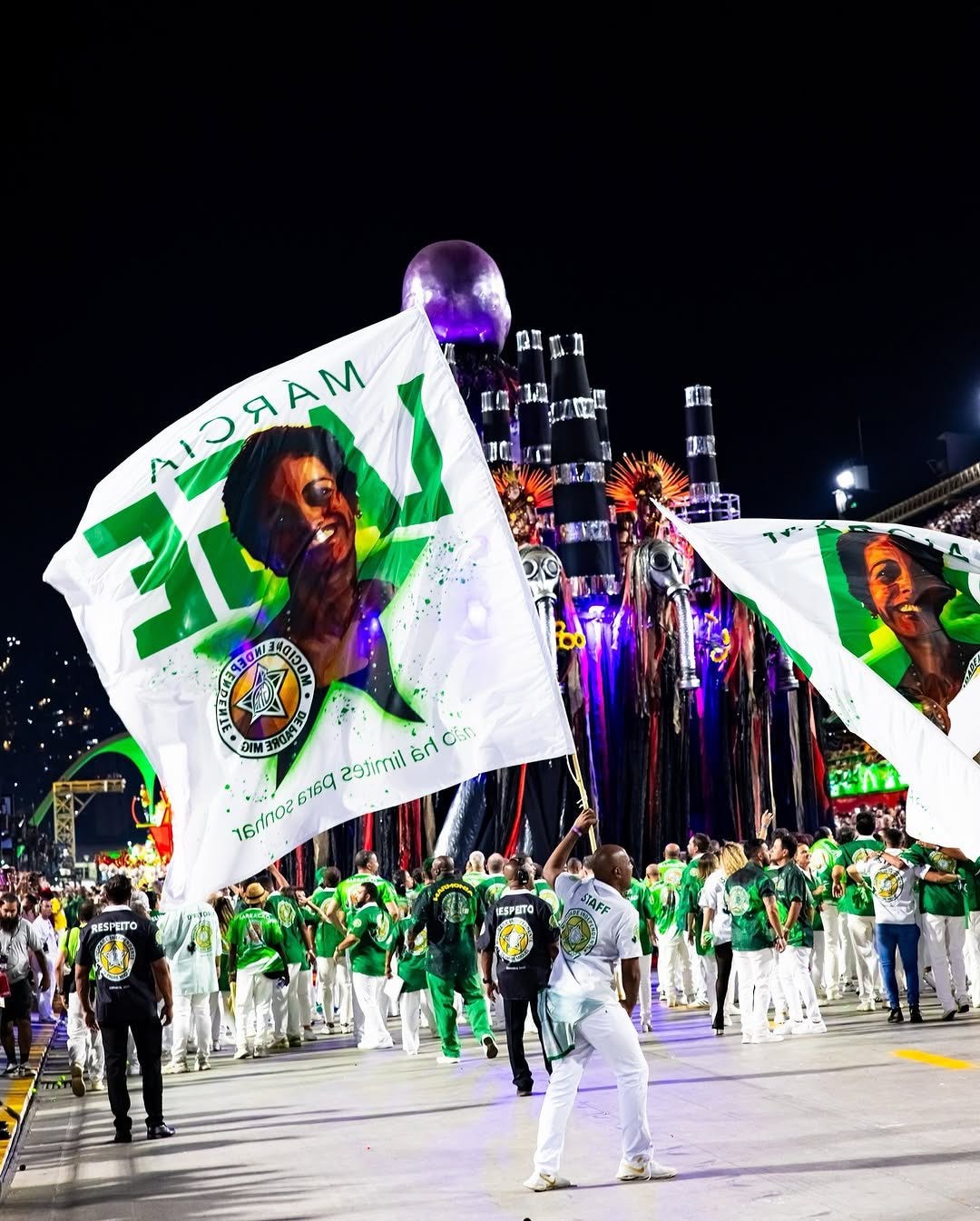The Brazilian Carnival has always been a spectacle of controlled chaos—an explosion of color, rhythm, and artistry where every detail is calculated to create maximum impact. Yet, for all the bombastic drumming and samba dancers, there is an unsung class of visionaries behind the curtain: the carnavalescos, the architects of these ephemeral utopias. Márcia Lage was one of the greats. Not merely a designer or a scenographer, she was a conductor of grandeur, a woman who transformed steel, fabric, and fantasy into something transcendent. Alongside her husband and creative partner, Renato Lage, she helped redefine the visual language of Carnival, pushing it from mere folk tradition into an operatic spectacle worthy of the grandest theaters in the world.
Carnival has always been a male-dominated world. The carnavalesco is traditionally seen as a larger-than-life figure—a mix between an artist, a mad scientist, and a battlefield general. It’s a role that demands not only artistic vision but also immense force of personality, overseeing vast teams of artisans, welders, seamstresses, and musicians. Márcia Lage embodied this role perfectly. In an environment where female carnavalescas were rare, and where recognition for women’s contributions was even rarer, she carved out her place, never allowing herself to be overshadowed. Her career was built on raw talent, precision, and an unwavering belief in her own artistic principles.
Despite her undeniable success, an unspoken reality persisted in Carnival: men were often hailed as geniuses, while women were relegated to "assistants" or "co-creators." Márcia refused to conform to this limiting narrative. She didn’t simply support her partner —she innovated alongside him, playing a crucial role in shaping the very essence of their work. Her creative influence was undeniable, proving time and again that her contributions were not just equal but essential to their groundbreaking designs.
Márcia’s legacy became a testament to the power of defying expectations. She wasn’t just a talented woman in a male-dominated field; she was a revolutionary force in Carnival, proving that genius knows no gender.
It is impossible to talk about Márcia without mentioning Renato, and vice versa. They were, after all, a unit—a design duo so attuned to each other’s instincts that their creations felt like the work of a single mind. But if Renato often took the official credit, Márcia was the alchemist in the shadows, shaping the texture of their shared vision with an eye for the baroque, the surreal, and the breathtaking. She was one of the few women to ever reach the upper echelons of Carnival’s creative pantheon, and she did so without ever diminishing her own voice or compromising her artistic convictions.
Márcia Lage's journey into the heart of Carnival was not just about designing floats and costumes—it was about storytelling. A true carnavalesco is, at heart, a dramatist, someone who understands that a parade is not just a sequence of pretty images, but a living, breathing narrative. Márcia mastered this art. Whether transforming the Sapucaí into a neon-lit outer space adventure or resurrecting lost African kingdoms in shimmering gold, she had a unique ability to transport spectators beyond the physical limits of the Sambadrome.
Carnival is a brutal industry. The pressure is relentless, the budgets are always tight, and the expectations are astronomical. To thrive in this world for decades is no small feat, and yet Márcia and Renato did precisely that. Their work spanned multiple schools, from the futuristic flamboyance of Mocidade Independente de Padre Miguel to the historic elegance of Salgueiro and the ambitious spectacles of Grande Rio.
Their impact on Mocidade was nothing short of legendary. The school, known for its daring and avant-garde approach, found in Márcia and Renato the perfect interpreters of its bold ethos. Together, they infused the parade with a fresh, experimental energy that bridged the worlds of tradition and innovation. Under their guidance, Mocidade became a playground for artistic revolution, where the conventional samba parade was reimagined into an immersive spectacle. They pushed the limits of creativity, blending high technology with the traditional Brazilian extravagance that had made Carnival such an iconic celebration.
One year, they incorporated sci-fi elements, where dancers in metallic costumes floated like futuristic beings, and the stage shimmered with holographic effects. Another, they toyed with optical illusions, leaving the crowd questioning what was real and what was not. Each year, their work left the audience gasping in awe, their hearts racing with the thrill of something utterly new and mesmerizing. With every parade, they dared to take the impossible and make it reality.
After years of triumphs and challenges at different samba schools, 2025 marked a return to where it all began. The full circle of Márcia and Renato’s journey was about to unfold with a sense of poetic justice—reclaiming their creative home and reuniting with the school that had first embraced their radical ideas. Mocidade had grown into a powerhouse of artistic expression, and the return of these two maestros was expected to be the crowning achievement of their shared legacy. Their creative reunion was met with excitement and anticipation, as fans eagerly awaited the magic that would surely emerge from their collaboration once more.
But fate, in all its cruel unpredictability, had other plans. In January 2025, just as parade preparations were reaching their peak, Márcia tragically passed away. It was a cruel twist of fate, the ultimate unpredictability of Carnival mirrored in life itself. The world seemed to stand still, stunned by the loss of a visionary who had shaped not just the samba schools, but the entire landscape of Carnival itself. Her absence left a void in the samba community that could never truly be filled. Yet, even in her passing, her presence was felt—her spirit, her passion, and her unparalleled genius were woven into the very fabric of the parade she had dreamed into existence.
The show would go on, but the heart of Mocidade’s 2025 presentation would forever carry her indelible mark, a tribute to a life and legacy that, like Carnival itself, transcended time and space.
Yet, in true carnavalesco fashion, even death could not erase the spectacle she had orchestrated. Mocidade’s 2025 parade, "Voltando para o Futuro: Não Há Limites Para Sonhar," became an unintentional tribute to its lost architect. The theme, initially conceived as a manifesto for the future of both humanity and samba, now took on an even deeper resonance.
Márcia’s vision transcended the traditional boundaries of Carnival; it was always about more than just dazzling costumes and infectious rhythms. It was about the spirit of reinvention, of pushing limits, and of constructing something that would not only captivate but also challenge. Though she was no longer physically present, her essence lived on in the vibrant tapestry of colors, sounds, and emotions that filled the Sambadrome. The parade’s theme was no longer merely a forward-thinking exploration; it had become a profound reflection on the cyclical nature of time, on honoring the past while boldly reaching into the unknown future.
It was an homage to Mocidade's past, to everyone and everything that contributed to making her the giant she is today, while looking boldly toward the future—a fierce statement on reinvention and limitless possibility. It celebrated the enduring power of tradition even as it embraced change, a testament to how a community's roots could propel it into the stratosphere of imagination. The samba school became both a time machine and a dreamscape, bridging the wisdom of the past with the audacity of what was yet to come.
The parade featured futuristic elements, ethereal aesthetics, and celestial imagery, reflecting Márcia's lifelong fascination with grandeur and spectacle. Through the gleaming metallic hues, the gravity-defying floats, and the luminous, star-like costumes, there was an unmistakable echo of her artistic legacy. Her influence was felt in every corner of the Sambadrome, from the intricate choreography to the symbolic use of light and space. The parade didn’t just tell a story—it invited the audience to step into a world where imagination reigned supreme and reality was but a stepping stone to a universe of possibilities.
The school marched not just to compete, but to honor her memory, turning the Sambadrome into a cathedral of remembrance, where every feather and sequin was a hymn to her genius. The dancers, performers, and artisans became both mourners and celebrants, wrapped in the spirit of both grief and gratitude. In the swaying of the wings, the glint of sequins under the lights, there was a profound sense that Mocidade was not merely paying tribute to Márcia—it was becoming her legacy.
When Mocidade stormed the Sapucaí, it was like a comet, a homage to the star that was looking for it, Márcia. The roar of the drums, the soaring harmonies of the samba, the eruption of color—it was as though the heavens themselves had parted to reveal the brilliance of a soul who had always known that carnival was, in the end, about more than spectacle; it was about connecting hearts, transcending time, and dreaming in ways that made the impossible seem not only plausible but inevitable. In that unforgettable moment, as Mocidade filled the Sapucaí, they were not just a samba school—they were a living, breathing tribute to Márcia’s unwavering belief in the infinite power of the imagination.
Though the judging panel may have failed to fully grasp the depth and scope of her vision, the "independente" heart of Mocidade stood firm. The unfairness of the scores did little to diminish the pride the community felt in the parade it had created. No score could measure the impact of Márcia’s genius, nor the spirit of unity and pride that filled every performer and spectator.
To work in Carnival is to work in ephemerality. A year of planning, designing, and agonizing over every detail culminates in a single night, after which everything—floats, costumes, sets—is discarded or dismantled. There is something tragic about this, a Sisyphean quality that could drive lesser artists to despair. But Márcia embraced it.
Perhaps this is what made her work so special: she knew that Carnival was not about permanence, but about impact. The goal was never to create something that would be preserved in a museum; it was to create something so breathtaking that it would be burned into the collective memory, living on in stories, photos, and the wide-eyed gasps of those who saw it unfold.
Her aesthetic was never just about decoration; it was about immersion. She understood space and movement better than most, ensuring that every element of a parade worked not just as an isolated beauty but as part of a grander, sweeping composition. Her floats didn’t just move; they danced. Her costumes weren’t just worn; they transformed the people inside them.
Márcia Lage left behind a legacy that will forever be woven into the fabric of Rio’s Carnival. Her death marked the end of an era, but also a moment of long-overdue recognition—finally, people began to speak not just of Renato Lage, but of Márcia as an independent creative force.
Her story mirrors that of so many women in the arts: quiet brilliance, years of dedicated work, a gradual ascent, and, at last, the recognition she deserved. But Márcia’s legacy was never about seeking validation from the outside world. She knew, long before anyone else, the magnitude of her achievements. She had built dreams, commanded empires of sequins and steel, and transformed the Sambadrome into a portal to the impossible.
And if that isn’t genius, what is?









